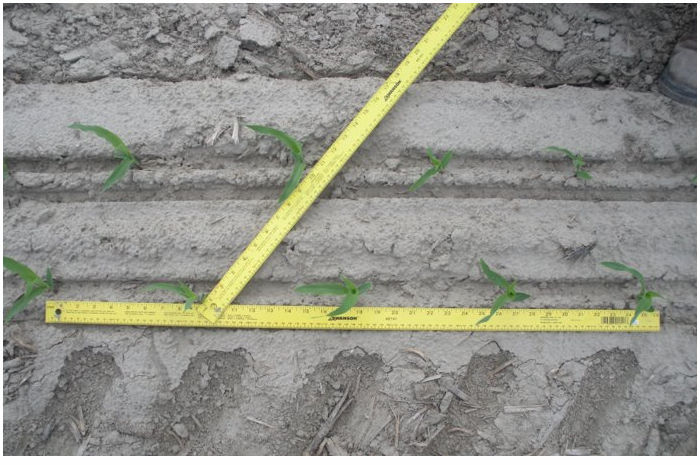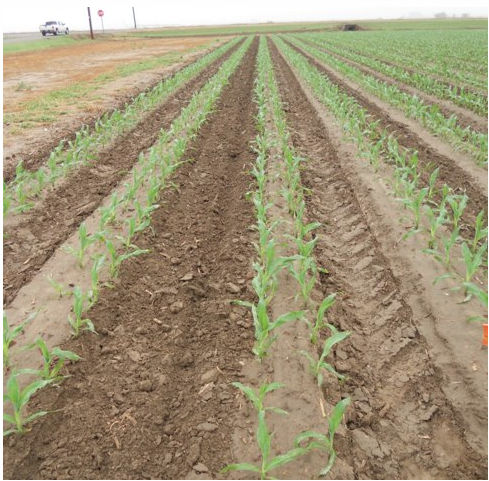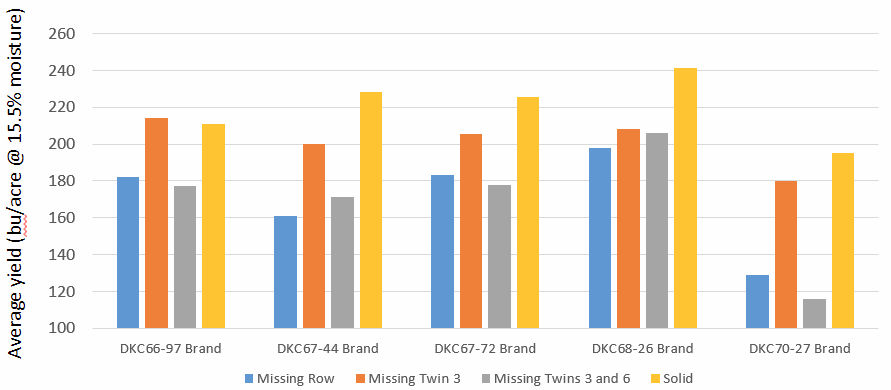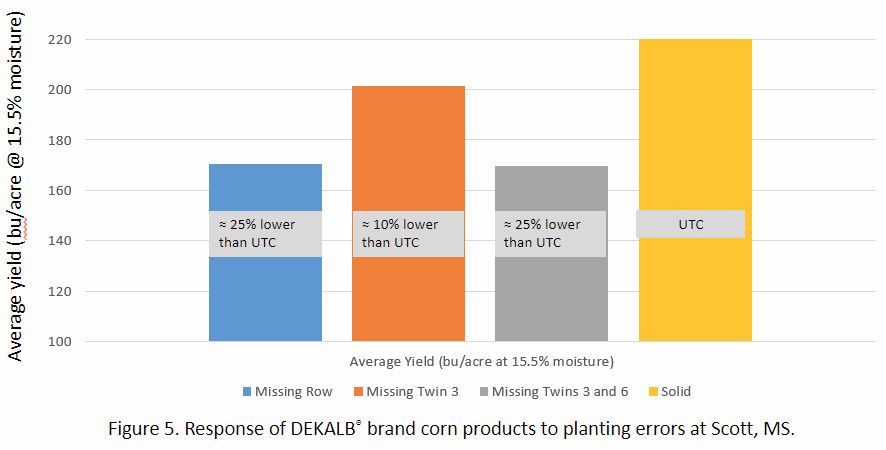Response of DEKALB® Brand Corn Products to Planting Mistakes - 2017
August 27, 2018
TRIAL OBJECTIVE
The purpose of this demonstration was to simulate planting errors that growers often encounter when planting corn.
This demonstration is similar to the missing row research that has been conducted over the last few years at the Monsanto Learning Center at Scott, MS.
Measure the yield potential of corn products planted “correctly” at the appropriate populations.
Measure the ability of corn products to compensate or “flex” in response to missing rows or missing twins in a planter pass.
Give another measure of the flex characteristics of DEKALB® brand corn products.
RESEARCH SITE DETAILS
| Location | Scott, MS |
| Soil Type | Clay Loam |
| Previous Crop |
Soybeans |
| Tillage Type |
Conventional |
| Planting Date | 03/28/17 |
| Harvest Date | 08/25/17 |
| Potential Yield (bu/acre) |
250 |
| Seeding Rate (seeds/acre) |
Various |
- 5 DEKALB® brand corn products were planted in 4 different configurations:
- These were 4-row, twin-row passes planted with a Monosem planter
- Rows were 175 feet long
- All agronomic inputs were per local standards
- Nitrogen (N) was applied at a rate of 240 lb/acre
Populations planted:
- DKC70-27 brand and DKC67-44 brand were planted at 32,000 kernels/acre in checks and 24,000 or 28,000 in treatments
- All others were planted at 36,000 kernels/acre in the check and 27,000 or 31,500 in treatments
Solid planted at either 32,000 or 36,000 kernels/acre planted
One full row unplanted – 1/4 of the pass missing
- Corn products planted at 32,000 kernels/acre would have a final population of 24,000 kernels planted/acre
- Corn products planted at 36,000 kernels/acre would have a final population of 27,000 kernels planted/acre
Populations planted:
- One twin-row unplanted
- Corn products planted at 32,000 kernels/acre would have a final population of 28,000 kernels planted/acre
- Corn products planted at 36,000 kernels/acre would have a final population of 31,500 kernels planted/acre
- Two separated twins on two different rows left unplanted
- Corn products planted at 32,000 kernels/acre would have a final population of 24,000 kernels planted/acre





UNDERSTANDING THE RESULTS
None of the corn products tested were able to compensate greatly for the missing plants in the field, although a range of compensation did appear to exist.
DKC70-27 brand appeared to be the least compensatory and DKC68-26 brand was the most compensatory in this demonstration.
The other corn products were intermediate in their ability to compensate.
The populations tested may not be the appropriate populations for each corn product in every geography.
KEY LEARNINGS
This information points out the requirement for correct populations and uniformity in corn fields to optimize yield potential.
Fields should be carefully evaluated for replanting after emergence and issues corrected at once if they exist.
- Data from this demonstration may help in defining the “flex” inherent to each corn product tested.
171013094135